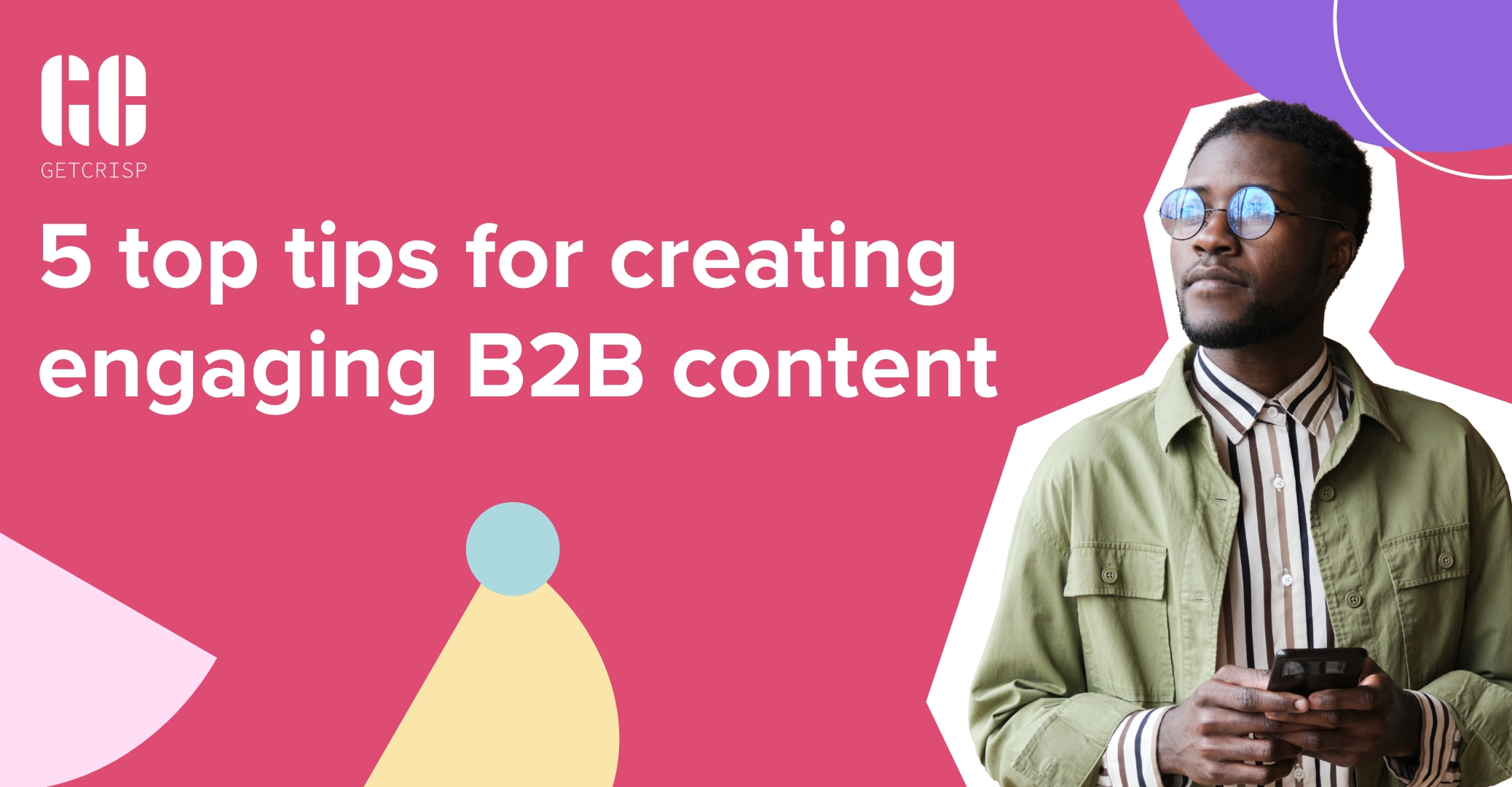It’s on your to-do list. But you keep putting it off: content creation. Successful B2B content can really drive business success and brand image. But if you aren’t doing it strategically, you could be missing out on a big slice of this very effective marketing pie.
We’ve put our heads together and crafted five top tips for creating engaging B2B content to get you started. Keen to know how you can catapult your online presence? Read on.
1. Know your goal
When you’re writing content, the first question to ask is the simplest: “why?” Sure, you might think your goal is simply to get eyeballs on your content. But go a little deeper. Have a clear idea of what you want your reader to do.
Perhaps you want to position yourself as an industry specialist? Or maybe your goal is to increase your LinkedIn network? You may simply want to promote sales or raise awareness of a product. Defining a clear, achievable goal will help to determine the type of content you write, and this is key to getting results.
2. Decide your format
So, you’ve nailed down your “why?” The next question is “how?” In other words, you need to figure out what type of content will achieve your goal. If your goal is to increase traffic to your website, you might want to focus on SEO. That will mean blogs targeting keywords to improve your ranking.
Simply want to entertain your readers? Sounds great – just try to keep things topical. Are you more focused on positioning yourself as an expert in your field, rather than SEO success? Why not post your expert takes on LinkedIn, or pitch thought leadership pieces to industry publications? This kind of content pays off over time, leveraging your expertise to bring in future business.
Whatever you write, we need a strong finish. Enter the call to action, or CTA for short. The role of a CTA is to prompt your audience into acting. The instruction needs to be simple and direct. Don’t leave any room for confusion – the next step for your reader should be obvious and require little-to-no effort. You’ve probably crossed paths with this example: “click this link to get in touch.” It works because it covers all the criteria we’ve mentioned!
3. Target the right audience
Simple question: who are you writing for? It really helps to have a clear, focused answer here. A lot of this will stem from the goal you set.
Are you looking to win business from SMEs? Are you aiming for enterprises? Maybe you’re targeting a particular sector? Or perhaps you want to increase your standing among your industry peers? Narrow it down and write for them.
Ask basic questions. What is their level of technical knowledge? What format do they like to read? What do they want to find out? What are their pain points? How can you help? Asking those questions will keep you on course, and make your content that much more relatable and engaging for the people it’s aimed at.
4. Create a strong structure
Let’s take stock. You know what your goal is, and your target audience is mapped out. Now let’s talk about structure. The make-or-break of any online content is in its introduction. Make it punchy. Give it impact. This is your first and only attempt to hook your reader, so make it count.
Okay, they’re hooked. What now? Keep them engaged with short paragraphs and sentences. Readers will lose concentration if your sentences are too long. Don’t give them an excuse to stop reading.
It really helps to have good sub-headers. Not only do these break a piece of writing up, but they also function as signposts. They help readers to skim-read your content to get the gist. And guess who else uses sub-headers to analyse your content? The Google algorithm. So, not only do sub-headers make your content more readable for people – they can also have SEO benefits. If you want more on SEO, we have lots of pointers here.
- Benefits over features – which should you highlight?
We’ve all been there. You’re reading a piece of content that’s so full of numbers and statistics that you get lost, lose interest, and ultimately stop reading. We’re not saying you shouldn’t mention stats, figures and features. But remember to highlight the benefits.
For example, let’s say you’re writing about ultra-fast internet. To most readers, “download your favourite film in seconds” trumps “our internet reaches 1GB download per second”. Leaning too heavily on static features can spark information overload or pure confusion.
You can probably guess what this does to your audience. That’s right – they disengage. Content needs to be engaging and relatable, not everyone will be specialists in your product. So, to answer our own question: benefits win. Always.
Final Thoughts
Phew, that’s a lot to get your head around. Let’s have a quick recap. We know that effective content takes planning, research, and structure. We know that content needs to be digestible so that the audience keeps reading right up to the last full stop.
But if we could only pick one tip from our top five? It would be having a clear and simple goal. Armed with your goal and this step-by-step guide, you’ll be creating engaging content in no time. If you’d like a chat to discuss your B2B content needs, we’d love to help. Just get in touch via our contact page.
